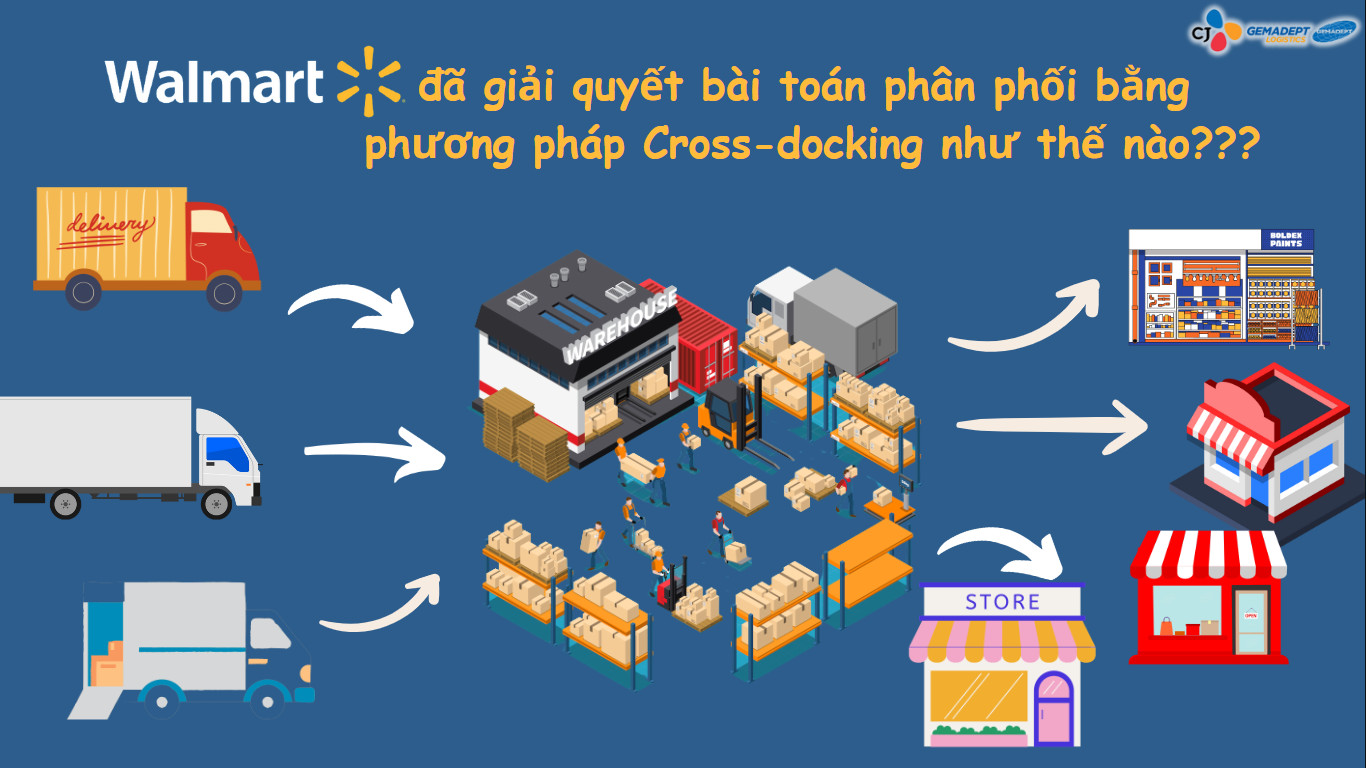In the supply chain management (SCM) industry, cross-docking has become an important method for optimizing transportation and storage operations. One of the famous examples of cross-docking's success is Walmart, the world's leading retail corporation with over 12,000 stores in 28 countries worldwide. With its impressive number of stores, Walmart's efficient supply chain management and inventory management are worth learning from. Walmart's logistics operations rely on a distribution technique called "cross-docking."

Cross-docking in SCM:
Cross-docking is a method in SCM where goods are received into a warehouse and then transferred out without being stored. Instead of storing and managing goods in a warehouse, cross-docking allows for the direct and more efficient transfer of goods from suppliers to end customers. This process helps minimize time, costs, and risks in transportation and storage.
 Picture: Internet
Picture: Internet
In its inventory management operations, Walmart implements five types of cross-docking techniques:
1. Opportunistic Cross-docking: This type relies on accurate information about where the goods are being transferred, where they will be sent, and the precise quantity of goods exchanged. Opportunistic cross-docking is also used in Walmart's warehouse management system through information systems and linkages between Walmart and retailers. Suppliers regularly notify retailers when necessary items are ready for immediate transportation.
2. Flow-through Cross-docking: In this type, there is a continuous flow of goods into and out of Walmart's distribution centers. This type of cross-docking is often applied to perishable goods that have a short shelf life, such as fresh produce or time-sensitive goods that cannot be stored for long periods (e.g., milk, canned food). This cross-docking system is used for distributing goods to discount supermarkets and other retail stores.
3. Distributor Cross-docking: In this type of cross-docking, suppliers directly deliver goods to retail stores without any intermediaries involved in the distribution process.
4. Manufacturing Cross-docking: Temporary cross-docking facilities serve as mini warehouses for manufacturing plants. When a production facility needs parts and raw materials for a specific product, they are provided by suppliers in the manufacturing area for a short period as needed. This minimizes transportation time, costs, and warehousing expenses.
5. Pre-allocated Cross-docking: In this type, goods are already packaged and labeled by the manufacturer and ready to be shipped to distribution centers and then directly to stores. The goods are transported to the distribution center and directly delivered to the stores and end consumers without the need for repackaging or changing the product packaging.
Cross-docking requires synchronized coordination between manufacturers (suppliers), warehouses, and Walmart's retail store system. Goods can be easily and quickly distributed only when accurate information is available. Managing information systems in cross-docking operations with the help of Electronic Data Interchange (EDI) and business information systems is crucial.
Cross-docking is an important method in SCM and has brought numerous benefits to Walmart. From Walmart's experience, we can draw important lessons such as speeding up transportation, optimizing storage and space, managing data and information, and collaborating closely with partners. These lessons can be applied in other businesses to optimize transportation and storage operations in the supply chain. Cross-docking not only helps minimize costs but also significantly improves the performance and responsiveness of the SCM system.